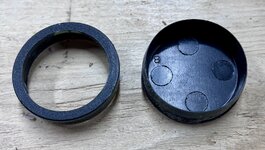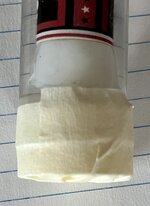NJturner
Member
I am moving from component pen making to fully custom pens and needed to increase the lengths of my blanks to accommodate the change. I watched a great video from John Underhill on vertical pen blank casting using his system and I decided to purchase it. Works very well, but I am having a strange issue with build ups of air in the bottom of the tubes which pretty much make the ends of the blanks unusable. The remainder of the casting is perfectly clear, bubble free. Looking for some ideas on what I am doing and how I can change things to eliminate this. Also wondering on possible suggestions for turning off the casting tube - is there an easy, safe way to do this?
At present, I am cutting my tubes to 9" in length and plugging the lower end with the provided caps. I am using Alumilite Clear Slow. I fill the tubes to about 1/2" from the tops and use the system rack to load them in my pressure pot. I pressurize to 55 lbs for a period of at least 5 hours before removing the blanks. The pictures show what is happening. Ideas?


At present, I am cutting my tubes to 9" in length and plugging the lower end with the provided caps. I am using Alumilite Clear Slow. I fill the tubes to about 1/2" from the tops and use the system rack to load them in my pressure pot. I pressurize to 55 lbs for a period of at least 5 hours before removing the blanks. The pictures show what is happening. Ideas?


